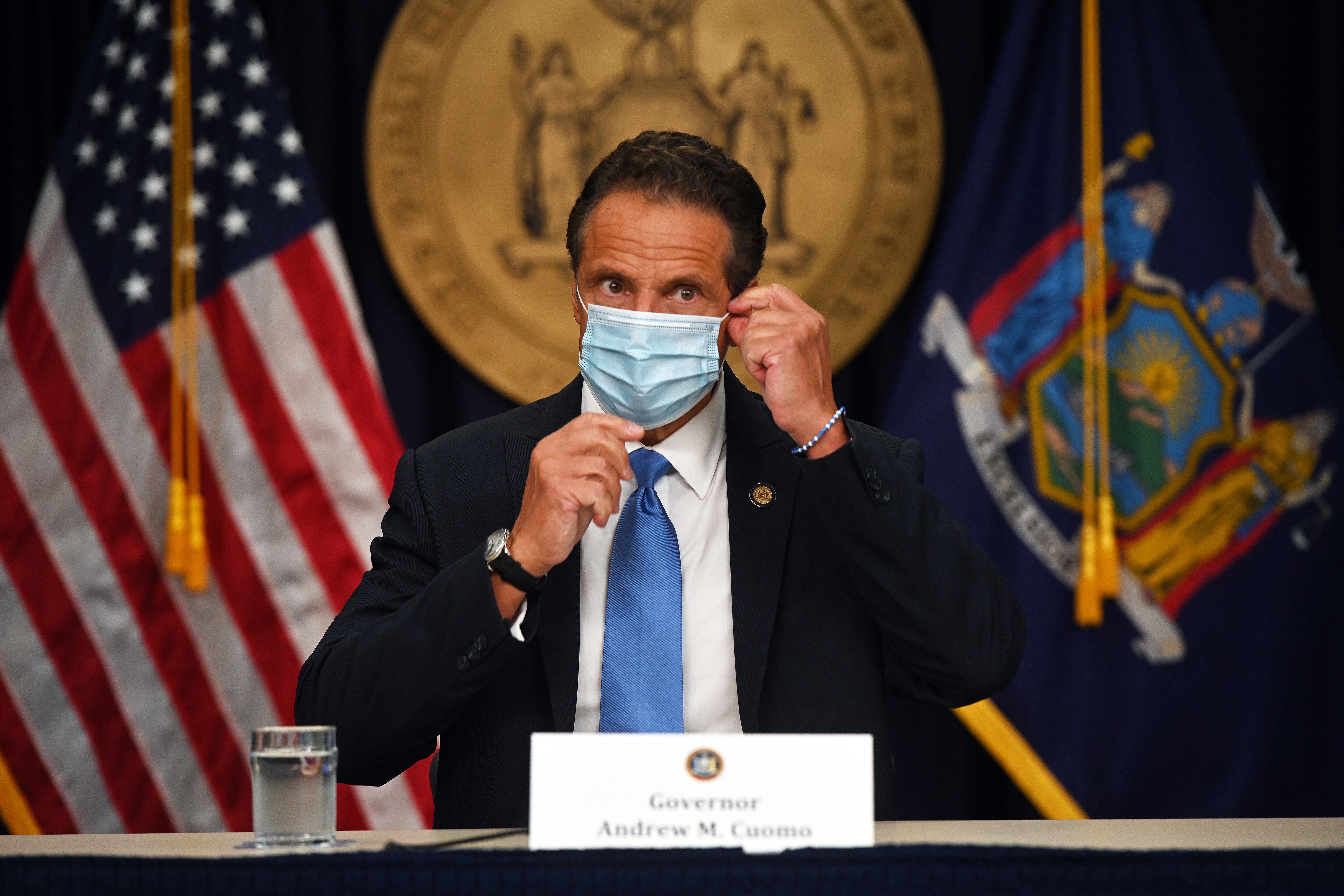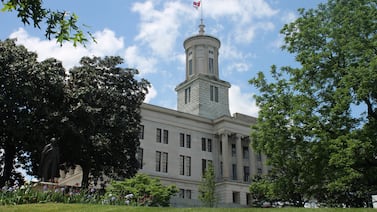New York City schools can reopen in the fall, Gov. Andrew Cuomo announced Friday. The long-awaited move was unsurprising given the current trajectory of the coronavirus — even as pressure grows to keep buildings closed and other school districts across the nation have been cancelling in-person learning.
Individual school districts have the flexibility to decide whether to delay the start of in-person learning, the governor said. That means the power ultimately rests with Mayor Bill de Blasio on whether city schools open their doors on Sept. 10, as planned.
Cuomo based his decision on local coronavirus infection rates. In order to resume in-person learning, he said, positive infection rates must fall below 5% over a 14-day rolling average. The threshold is higher for New York City, where de Blasio said schools won’t open unless the positivity rates fall below 3% over a seven-day rolling average.
New York City’s daily rate has been below 2% since early June.
“When you look at our infection rate, we are probably in the best situation in the country right now,” Cuomo said in a conference call on Friday. “So if anybody can open schools, we can open schools. And that’s true for every region.”
Still, Cuomo — who has frequently contradicted Mayor Bill de Blasio’s policy decisions — casted doubt on the city’s ability to keep the trust of parents who are nervous about sending their children back to school buildings. On Friday, Cuomo asked big school districts in the state to hold a series of five public engagement meetings with families, and a separate conversation with educators, to arm school communities with more information about returning to classes.
Shortly after Cuomo’s announcement, the mayor tweeted, “We are committed to getting this right. We will reopen safely.”
New York City education leaders have already held many information sessions with parents throughout the city, and officials did not immediately say whether they had to host additional ones.
“The more dialogue, the better,” Cuomo said, noting that winning over the trust of teachers will be key to reopening plans. “They have to be comfortable.”
Many public health experts have argued the infection rate is low enough that the city should be able to reopen its schools as long as key protections like masks, ventilation, and social distancing procedures are in place.
But educators and the city teachers union are increasingly skeptical that the education department has taken all the steps it has promised in order to keep staff and students safe. The United Federation of Teachers has asked for proof that protocols are in place, and a caucus of teachers within the union has stated it is exploring how to conduct rolling sickouts to get around state law prohibiting strikes. Many teachers are also concerned about whether children can keep their masks on all day — as well as how to enforce mask-wearing — and what will happen in poorly ventilated classrooms when children eat lunch, among other issues.
Cuomo asked districts to post clear information about testing and tracing positive coronavirus cases in schools, along with plans for remote learning. Even though districts included this information in plans they submitted to the state, Cuomo said the details can be hard for families to find and parse within dense documents. New York City’s health plan for schools, for example, is 32 pages long — though that was reportedly among the shortest plans submitted despite serving roughly 1 million children.
Of the country’s largest school districts, New York City remains the only one that plans to host any in-person classes in the fall. The city is planning for students to attend school one to three days a week while learning remotely the other days. Families can also choose to be fully remote at any point in the year. Chancellor Richard Carranza had asked families to make a decision by Aug. 7 in order to allow schools to plan.
Each school’s schedule will be different. For weeks, principals have raced to find a model that fits their school’s enrollment and building size. Students must socially distance from one another, and schools will have to teach more groups of students without hiring more staff, given a citywide hiring freeze and budgetary constraints.
Compounding this logistical puzzle, school leaders do not know how many of their students will opt to be fully remote, nor do they know how many teachers will be returning. High-risk educators can apply for medical accommodations to work remotely. Many other teachers who live with young children or high-risk relatives are grappling with whether to take family leave from their jobs.
The state required its roughly 700 districts to devise detailed reopening plans that touch on academics, scheduling logistics, and virus precautions. New York City had submitted its health plan but requested an extension for its school-by-school proposals, which are due to Albany on Friday. The city submitted an overview of its reopening plan late Friday afternoon. Because of the district’s size, the state will allow the city to submit school-specific plans on a rolling basis by Aug. 14, according to Miranda Barbot, a spokesperson for the city’s education department.
Advocates remained concerned about equity issues with remote learning, given that even those children who return to in-person schooling will be spending most of their time learning remotely. Families still lack devices, internet and other services, advocates warn.
“School leaders are doing the best they can with the resources they have,” Jasmine Gripper, executive director of the advocacy group Alliance for Quality Education, said in a statement, “but the lack of funding from New York State has created an unacceptable situation where districts are unable to adequately provide for students’ educational, health and safety needs.”







